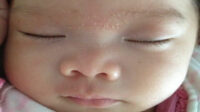The Emergency Medicine exam is quickly approaching. How prepared are you?
The BoardVitals Emergency Medicine question bank offers about 700 high-yield questions to prepare you for the ABEM Emergency Medicine Written Board Exam and the In-Training Exam. For a preview of our questions, read on for two free Emergency Medicine questions written by leading medical practitioners.
Question 1
A 50 y/o man is brought into the ER by coworkers following an accidental splash into his eyes with chemicals. The workers don’t know what the liquid was but they work in a factory where they etch glass. He was walking by a coworker when he was accidentally splashed by a liquid the coworker was working with. He immediately screamed and other people came to his aid, attempting to flush his eyes with cups of water. Reportedly his is on medication for hypertension.
Upon arrival you see him in obvious distress with vitals of BP 160/100, HR 120, RR 22, Temp 99.1, Sat 98% on RA. When you are able to look at his eyes you see they are both very injected with a flaking cornea and edema and erythema of both lids. What is the next course of action for this patient? What is the suspected chemical?
Answers
A. This is a burn from lye. Burns from alkali are the most serious chemical injury and he needs immediate irrigation with a Morgan Lens and saline until the pH returns to 7.4.
B. This is a burn from Acetone. Although painful, it is not as serious as from acid or base so he just needs to stand over the eyewash station and irritate for a few minutes with water.
C. This is a burn from Sulphuric acid and is very serious. He needs irrigation with saline via a Morgan Lens until the pH is back to 7.4.
D. This is a burn from Hydrofluoric acid which is extremely acidic and in addition to damaging the eyes, can severely burn the surrounding skin. He needs Morgan Lens irrigation until a pH of 7.4 is reached and his skin needs to be treated with bacitracin and local burn care. (Correct)
E. This burn is likely from cleaning chemicals like detergent. It requires irrigation with water at the eyewash station until he feels better.
Answer
Correct: D
Explanation
This is a burn of the eye from Hydrofluoric acid or HF. It is extremely acidic and caustic and is used to etch glass – being one of the few acids that will cut glass. It is stored in a wax lined container. It can cause severe eye burns as well as to the skin so it needs Morgan Lens irrigation with saline until the pH of the eye is back to 7.4. The surrounding tissue should also be investigated for burns as well and should be treated if present.
References
Peak, Dallas E., et al. “Chapter 4. Ophthalmic Trauma.” The Atlas of Emergency Medicine, 3e. Eds. Kevin J. Knoop, et al. New York, NY: McGraw-Hill, 2010
Question 2
A 19 y/o F returns from Spring break with severe pain in both of her eyes for a day. She says she was on vacation for 4 days in the Caribbean and halfway through her last day there, she began to notice pain and blurred vision in both eyes. She does not wear glasses or contacts. There was no trauma, no fever, or other symptoms. Her vitals in the ER are unremarkable. Her visual acuity without correction is 20/100 in both eyes. On exam, she has severe photophobia, and both eyes are injected but the pupils are normally reactive. You perform a fluorescein exam and see the following. What do you tell the patient? What is the treatment?
Answers
A. Tell her she has herpetic conjunctivitis and needs oral and ocular antiherpetic drugs.
B. Tell her she has iritis. She can get pred forte drops and follow up with an eye doctor in a few days.
C. Tell her she has severe conjunctivitis that has spread into the corneas. She needs ciprofloxacin eye drops and urgent ophtho follow up.
D. Tell her she has ultraviolet keratitis. Tell her she can keep both eyes patched when able and instill 1% cyclopentolate drops to treat symptoms which should resolve in 48 hours.
E. Tell her she needs eye surgery. She has numerous ocular foreign bodies.
Answer
Correct: D
Explanation
Ultraviolet keratitis can come from prolonged direct sunlight. It usually resolves within two days and cyclopentolate or similar drops can help with pain until it does. Binocular patching is also helpful. Herpetic keratitis causes a dendritic pattern of uptake. Iritis does not have fluorescein uptake. This is not infectious. A corneal abrasion appears as irregular, scratch-type uptake, not punctate uptake.
References
Riordan-Eva P (2014). Disorders of the Eyes & Lids. In Papadakis M.A., McPhee S.J., Rabow M.W. (Eds), Current Medical Diagnosis & Treatment 2015
How did you do? Make sure you’re prepared for the exam with the BoardVitals Emergency Medicine Question Bank.




